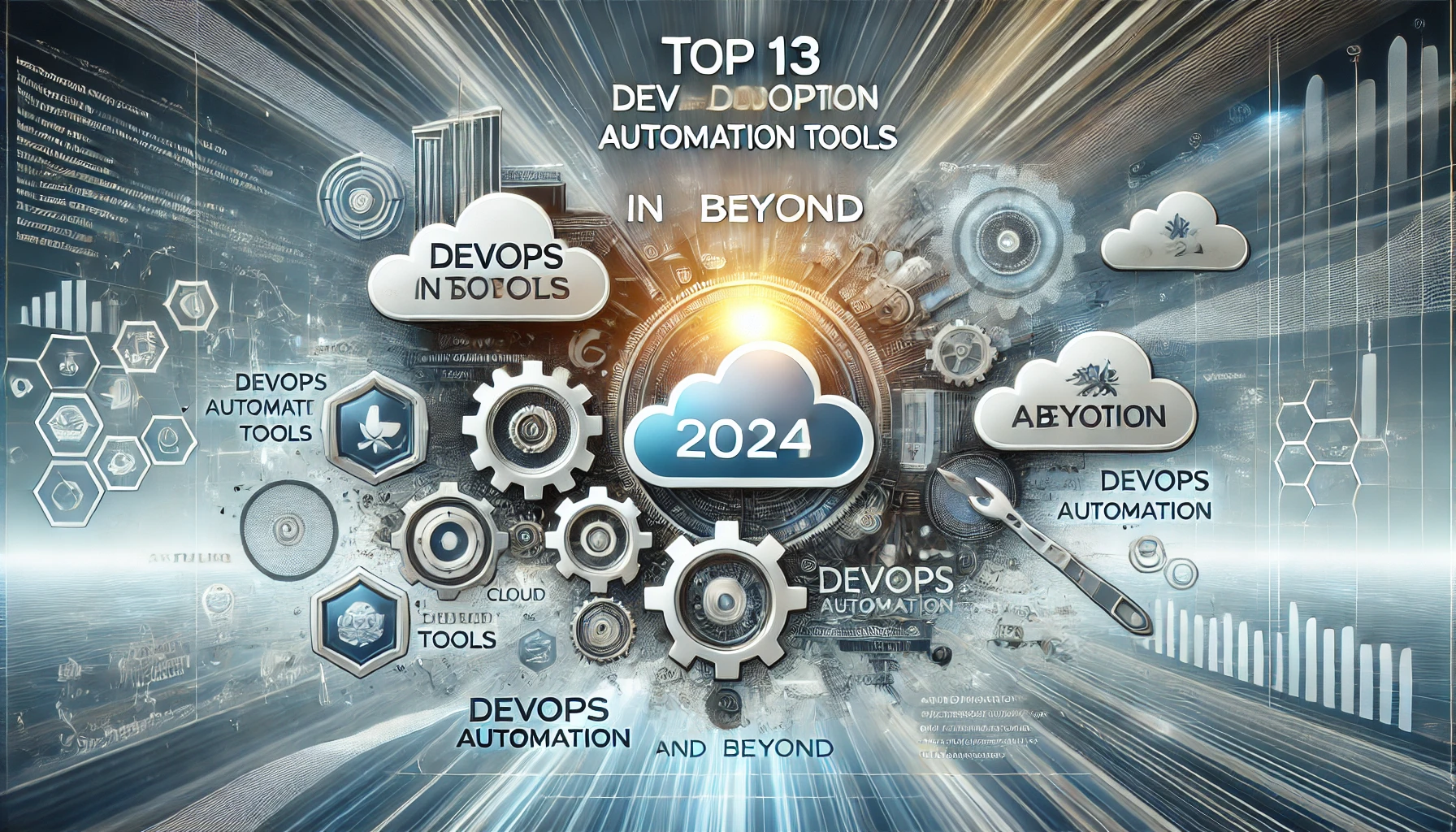
In the fast-paced world of software development, automation is key to maintaining efficiency, consistency, and speed. DevOps automation tools play a crucial role in achieving these goals by automating repetitive tasks, streamlining workflows, and enhancing collaboration between development and operations teams. Here are the top 13 DevOps automation tools you should consider in 2024 and beyond, along with their benefits:
1. Jenkins
Jenkins is an open-source automation server that is widely used for continuous integration and continuous delivery (CI/CD). It supports building, deploying, and automating any project, with hundreds of plugins to support various tools and frameworks.
Key Features:
- Extensible with a vast plugin ecosystem
- Easy setup and configuration
- Pipeline as code
Benefits:
- Accelerates software delivery
- Reduces integration issues
- Improves developer productivity
2. GitLab CI/CD
CI/CD tools automate the process of integrating code changes, testing, and deploying applications. Popular CI/CD tools include:
Key Features:
- Integrated with GitLab repository
- Auto DevOps for automatic pipeline creation
- Kubernetes integration
Benefits:
- Streamlines the development process
- Enhances collaboration
- Reduces time to market
3. CircleCI
CircleCI is a cloud-based CI/CD tool known for its speed and efficiency. It automates the build, test, and deploy process, integrating seamlessly with GitHub and Bitbucket.
Key Features:
- Fast builds with caching
- Customizable workflows
- Docker support
Benefits:
- Increases build speed
- Reduces testing time
- Improves deployment reliability
4. Travis CI
Travis CI is a continuous integration service used to build and test software projects hosted on GitHub. It automates testing and deployment, making it easier to detect issues early.
Key Features:
- Easy setup with GitHub integration
- Multi-language support
- Automated deployment to various environments
Benefits:
- Enhances code quality
- Simplifies deployment
- Reduces manual effort
5. TeamCity
TeamCity is a powerful CI/CD server from JetBrains. It provides out-of-the-box support for numerous build tools and test frameworks, making it highly versatile.
Key Features:
- Extensive integration capabilities
- Parallel builds
- Comprehensive VCS support
Benefits:
- Speeds up the build process
- Improves test coverage
- Enhances team collaboration
6. Ansible
Ansible is an open-source tool for configuration management, application deployment, and task automation. It simplifies complex tasks and ensures consistent configurations across your infrastructure.
Key Features:
- Agentless architecture
- Playbooks for configuration management
- Extensive module library
Benefits:
- Reduces configuration errors
- Automates repetitive tasks
- Enhances operational efficiency
7. Puppet
Puppet is a configuration management tool that automates the provisioning and management of infrastructure. It uses a declarative language to define system configurations.
Key Features:
- Model-driven approach
- Centralized management
- Strong reporting and auditing capabilities
Benefits:
- Ensures consistency
- Reduces manual intervention
- Improves compliance
8. Chef
Chef is an automation platform that transforms infrastructure into code. It automates the configuration, deployment, and management of applications across your infrastructure.
Key Features:
- Code-driven configurations
- Strong ecosystem of cookbooks
- Test-driven development
Benefits:
- Enhances scalability
- Reduces configuration drift
- Improves infrastructure management
9. SaltStack
SaltStack is an open-source software for event-driven IT automation, remote task execution, and configuration management. It is designed to handle large-scale infrastructure efficiently.
Key Features:
- Real-time automation
- Scalable architecture
- Flexible configuration management
Benefits:
- Reduces operational complexity
- Improves response time
- Enhances scalability
10. Docker
Docker is a platform that enables developers to package applications into containers, ensuring consistency across multiple environments. Containers are lightweight and portable, making them ideal for DevOps workflows.
Key Features:
- Simplifies application deployment
- Supports microservices architecture
- Broad ecosystem and community support
Benefits:
- Increases deployment speed
- Enhances application portability
- Reduces environmental inconsistencies
11. Kubernetes
Kubernetes is an open-source container orchestration platform that automates the deployment, scaling, and management of containerized applications. It is a critical tool for managing large-scale containerized environments.
Key Features:
- Automated scaling and self-healing
- Load balancing and service discovery
- Extensive ecosystem of tools and extensions
Benefits:
- Enhances scalability and reliability
- Simplifies container management
- Reduces operational overhead
12. Prometheus
Prometheus is an open-source monitoring and alerting toolkit designed for reliability and scalability. It collects metrics from configured targets and generates alerts based on defined rules.
Key Features:
- Multi-dimensional data model
- Powerful query language (PromQL)
- Robust alerting mechanism
Benefits:
- Improves system observability
- Enables proactive issue resolution
- Enhances system reliability
13. Terraform
Terraform is an open-source tool that enables safe and efficient infrastructure provisioning using a declarative configuration language. It supports multiple cloud providers and infrastructure platforms.
Key Features:
- Infrastructure as code
- Cross-platform support
- Modular and reusable configurations
Benefits:
- Simplifies infrastructure management
- Enhances scalability
- Reduces provisioning time
Final Words
In the dynamic and fast-evolving realm of software development, adopting the right DevOps automation tools can be a game-changer. These top 13 tools for 2024 and beyond offer powerful features that streamline workflows, enhance collaboration, and ensure the delivery of high-quality software at speed. By integrating these tools into your DevOps practices, you can significantly improve efficiency, reduce costs, and maintain a competitive edge in the market. Embrace these technologies to transform your development lifecycle and drive your business towards greater innovation and success.

